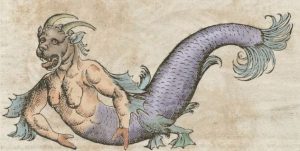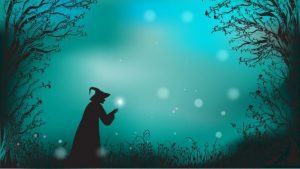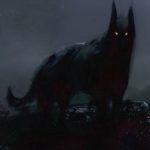 Our World
Our World  Our World
Our World  Movies and TV
Movies and TV The 10 Coolest Stars to Set Sail on The Love Boat
 History
History 10 Things You Didn’t Know About the American National Anthem
 Technology
Technology Top 10 Everyday Tech Buzzwords That Hide a Darker Past
 Humans
Humans 10 Everyday Human Behaviors That Are Actually Survival Instincts
 Animals
Animals 10 Animals That Humiliated and Harmed Historical Leaders
 History
History 10 Most Influential Protests in Modern History
 Creepy
Creepy 10 More Representations of Death from Myth, Legend, and Folktale
 Technology
Technology 10 Scientific Breakthroughs of 2025 That’ll Change Everything
 Our World
Our World 10 Ways Icelandic Culture Makes Other Countries Look Boring
 Our World
Our World 10 Ways Your Christmas Tree Is More Lit Than You Think
 Movies and TV
Movies and TV The 10 Coolest Stars to Set Sail on The Love Boat
 History
History 10 Things You Didn’t Know About the American National Anthem
Who's Behind Listverse?

Jamie Frater
Head Editor
Jamie founded Listverse due to an insatiable desire to share fascinating, obscure, and bizarre facts. He has been a guest speaker on numerous national radio and television stations and is a five time published author.
More About Us Technology
Technology Top 10 Everyday Tech Buzzwords That Hide a Darker Past
 Humans
Humans 10 Everyday Human Behaviors That Are Actually Survival Instincts
 Animals
Animals 10 Animals That Humiliated and Harmed Historical Leaders
 History
History 10 Most Influential Protests in Modern History
 Creepy
Creepy 10 More Representations of Death from Myth, Legend, and Folktale
 Technology
Technology 10 Scientific Breakthroughs of 2025 That’ll Change Everything
 Our World
Our World 10 Ways Icelandic Culture Makes Other Countries Look Boring
Ten Mythical English Beasts Guaranteed to Keep You Awake at Night
The English sure know how to weave a ripping good yarn. Throughout history, pretty much every area of England (and Scotland and Wales) has become home to a series of crazy myths and wild legends. Folklore is as much a part of English culture as, well, fish and chips. Or tea and crumpets. Or anything else that you might have stereotypically associated with the people of the British Isles. All this folklore was handed down orally through generations and across the centuries until it finally started to be documented in writing over the last few hundred years.
Now, it’s high time that we share ten of those wildest tall tales of mythical beasts with you here. In this list, we’ll go over ten of the strangest, scariest, and most unsettling mythological English creatures to ever exist. (Well, “exist” is doing a lot of heavy lifting in that sentence, but you know what we mean.) Read on to have the hairs stand up on the back of your neck… and then when you finish, ask yourself: How many of these tales do you truly believe?
Related: 10 Mythical Humanoids from the Ancient World
10 The Penhill Giant
The so-called Penhill Giant is a well-known beast who appears in many English legends. According to the lore, he is said to live in a fortress in the Penhill area of Wensleydale, Yorkshire. He’s huge (hence his name), and he’s supposedly very aggressive, too. As the story goes, he loves to terrorize local flocks of sheep. He’s been known to eat the poor sheep by the dozen at times.
In the past, some farmers and herders have supposedly woken up in the morning only to find their entire flocks gone just like that. And when he tires of sheep—or he’s eaten all the sheep in the area and impatient that they aren’t being replenished—he is alleged to have terrorized poor and unsuspecting women in the region, too. It all sounds pretty fanciful and phony, doesn’t it? After all, in a relatively small area like Wensleydale, it should be pretty easy to find a supposed giant living in a fortress and feasting on sheep.
This is especially true as it’s not exactly tough to hide out in that area—not like how the Loch Ness Monster might be in some extremely deep loch, or another sea monster might retreat to the dark bottom of the vast ocean. So, the Penhill Giant has to be fake… right? Maybe not. From time to time, folklorists have argued that the giant could have some ancient basis in fact. His theory is that there used to be a real-life, massive terrestrial bear-like figure roaming the countryside centuries ago and that animal is what the Penhill Giant is based upon.[1]
9 The Stratford Lyon

In the far corner of southwest England lives a mythical monster called the Stratford Lyon. Sometimes known as the Red Lion, this ferocious feline was first documented within the New Forest in the 18th century. The way his existence was discovered was creepy enough: somebody looking through a centuries-old Bible belonging to a local family called the Stratfords found a series of notes written in the book’s margins warning the reader of a lion in the area. Whether the written rants of a schizophrenic person or a true account of an actual lion roaming the woods, the story immediately creeped out the entire region.
As the legend goes, in the late 14th or early 15th century, a landowner named Stratford lived on a vast expanse in the New Forest village of South Baddesley. One night, he was walking across his land when he found a massive pair of red antlers sticking up from the ground. He pulled as hard as he could at them, and eventually, they started to come up from the earth. As they did, he quickly saw that they were attached to a huge lion’s head. For some reason, he kept pulling. Maybe curiosity got the best of him. As he did, the lion began to buck and fight. Not wanting to give in, Stratford gripped tight onto the antlers and jumped on the lion’s back.
The lion sprinted around the forest for the next hour, wildly bucking and desperately trying to get Stratford off his back. The landowner wouldn’t relent, though. After three full trips around the forest, Stratford finally brought the antlered beast to heel. Now having been tamed, the lion pledged its loyalty to Stratford and his family. The beast committed to forever aiding the Stratford clan in times of need—and harming their enemies in any way they wished.
Today, the Stratford Lyon is said to still walk in the forest at night. Some people have even claimed to have witnessed the ghost of old Mr. Stratford himself up on the lion’s back.[2]
8 Jenny Greenteeth
Jenny Greenteeth is one of the more unsettling figures in all of English folklore. She is a river hag, somewhat similar to the well-known Peg Powler. As the story goes, Jenny was known for luring small children to rivers and streams and then suddenly pulling them under and drowning them. She would hide herself away in the pondweed or duckweed on top of the water, too.
Those weeds made it seem as though there was a safe, secure mat of ground over the water. Kids wouldn’t see the danger of the rushing deep river waters, then, and they would get close to the current. Then, with the little kids unaware of the dangers, Jenny Greenteeth would supposedly pop up, grab the child, and pull them underneath the surface, never to be seen again.
Various versions of Jenny Greenteeth are common in folklore from multiple parts of England, though she is most often known around Liverpool, southwest Lancashire, and North Staffordshire. There, she is said to have green skin, long hair, and very sharp teeth. In nearby Cheshire and Shropshire, she is known as “Wicket Jenny,” and in those regions, she’s even said to hang out high in the trees at night while waiting for her next victim.
Historians and folklorists have mostly come to figure that Jenny Greenteeth is actually just a cautionary tale employed by parents from centuries ago to keep their kids away from the water. But what if she’s actually real? Just to be safe, you better not go down near the river…[3]
7 Tiddy Mun
Tiddy Mun is one of the best-known (and strangest) bog spirits in all of England. He is said to be responsible for the watery mists of the Fens of South Lincolnshire, the Fens of the Isle of Ely, and the Carrs in North Lincolnshire. First described as a folklorist back in 1891, Tiddy Mun is said to be the size of a three-year-old child, even though he’s a grown man.
In fact, his face is very old, and his hair is long, tangled, and white. He has a matted, messy beard, too. And he wears a gray gown—so he is very difficult to see at dusk. You’ll hear him before you see him, though, as he supposedly has a very shrill and memorable laugh that shoots out through the mists of the region. Tiddy Mun is also said to be a bit of a mean man.
When the first folklorists documented his existence at the end of the 19th century, they did so because locals in the Ancholme Valley had complained that he had placed a curse of pestilence on their village. Supposedly, Tiddy Mun was mad that the Dutch had drained the Fens back in the 17th century under the lead of a man named Cornelius Vermuyden. So Tiddy Mun cursed the local villages as punishment for his beloved Fens being destroyed and his cloaking mists being negatively affected.
Thankfully for the villagers’ sake, they were eventually able to placate Tiddy Mun by gathering under the twilight of a new moon and pouring buckets of water into the dried-up dyke. That, the legend went, resurrected the watery characteristics of the Fens well enough that Tiddy Mun felt good again. They apologized profusely to him, and he lifted his curse.
From then on, he was said to have worked carefully with the villagers in the region to ensure they had the necessary water that they needed. However, the entire time, locals knew that if they ever crossed Tiddy Mun again, he could quickly snuff out their future and curse their lives.[4]
6 The Veasta

In August 1995, a man named Martin Ball was walking along Chesil Beach in the Portland area of southern England. He looked out into the ocean and saw what he later described to others as a bizarre creature: “some twelve feet high, half fish and half giant seahorse.” He thought it was strange and entirely inexplicable. He then started doing some research.
Soon, he discovered that people had spotted that very same creature in the ocean just off Chesil Beach for a very long time—centuries, in fact. And the supposed massive half-seahorse creature even had a name: the Veasta. The first documented report of the Veasta goes all the way back to 1457. That year, it was seen swimming in the ocean waves just off the beach.
Every fifty or one hundred years after that, it would be spotted and documented again. Most notably, it was seen in 1757 by a Reverend named John Hutchens. In 1965, the half-seahorse was supposedly seen swimming along in Church Ope Cove in another part of the waters off Portland. One time, a dead Veasta supposedly even washed up on the sandy beach just a few miles down the coast from Portland at a place called Burton Bradstock.
So, what might explain the Veasta? Well, for one, its name might give a clue. The word is pronounced like the Spanish word “vista,” which means “sighting.” Folklorists hypothesize that because the Spanish used to sail up to the far southern tips of England to trade goods centuries ago, some of their words, like “vista,” may have entered the English lexicon.
Whether it was something that was lost in translation or an actual beast roaming the waters off the coast of Portland, we may never know. But if history is any indicator, we’ll likely get another sighting of this seahorse-like creature in another 20 or 30 years.[5]
5 Yallery Brown
According to an old folktale told for centuries around the Lincolnshire area, a young man named Tom was sitting out in a field one day, catching a break during the middle of his work. As he sat there, he began to hear a little whimper nearby. It sounded like a young child in pain, so Tom rushed over to figure out the source of the noise. Eventually, he found a little creature trapped under a flat stone.
Tom picked up the stone and discovered that the tiny whining creature was a very small man with yellow-brown skin. The little man begged Tom to help free him from underneath the stone, and when the boy did, the creature jumped up in delight. The creature explained to Tom that his name was Yallery Brown. And he was ecstatic that he’d been freed from being trapped under the stone, so he assured Tom that he’d help with all of the boy’s daily chores. That sounded pretty good to Tom, and he began to thank the little guy.
However, just as soon as Tom gave his thanks, Yallery Brown flew into a horrific rage. He warned Tom that he must never be thanked for his work, or else there would be horrible consequences. That seemed strange to Tom to receive a ton of help from this bizarre little man but not have to offer any thanks or gratitude for it. But he shrugged his shoulders and agreed to Yallery Brown’s demands.
The next day, Tom began his tasks as usual. But after only a couple hours, he found that his jobs were magically doing themselves. His broom was sweeping around on its own, and the corn he’d been required to ground down into mash was grinding on its own without his assistance. Over a period of days, Tom became an incredibly productive little worker bee—all thanks to the magic of Yallery Brown. Soon, other people began to notice how suddenly the formerly listless boy was on the ball. Others in the village started to accuse Tom of being a witch or a warlock. Tom wasn’t very smart or motivated, but he was intelligent enough to know how those accusations might end.
So he called for Yallery Brown. Right on cue, the creature showed up. Tom told him that the creature’s assistance would no longer be necessary. And mindlessly, as he was doing that, Tom thanked the little guy for all his help up to that point. Enraged at being thanked, Yallery Brown flew off the handle. He told Tom that since he’d been thanked, he had no choice but to curse the poor young boy for the rest of his life.
“Work as you will, you’ll never do well,” Yallery Brown hollered his spell out at Tom. “Work as you might, you’ll never get anything, For harm and mischance and Yallery-Brown, You’ve let out yourself from under the stone!” And just like that, for the rest of his long life, Tom was plagued with awful luck and horrible fortune.[6]
4 Hyter Sprites
In the Norfolk area, are said to be a group of fairies known as the hyter sprites. Sometimes also called the hikey sprites, these small fairies aren’t extremely well known across the rest of England. But Norfolk locals swear that they exist. Not only that but they are also said to be good for humans in the area. Well, maybe.
So, the story of the hyter sprites has historically been one of a small band of fairies that is fond of helping small children return home after they get lost—especially at night. Throughout the centuries, these hyter sprites are said to magically show up whenever a child wanders off away from their family. They help guide the kid home safely and ensure that nothing terrible happens to them. Other legends related to these fairies even go so far as to claim that they help wayward donkeys and livestock return home to their farms, too. Isn’t that nice?
Well… maybe. See, even though folklorists today see the hyter sprites as benevolent, parents from the last few centuries certainly didn’t view things the same way. Instead, those past generations of parents around Norfolk would warn their children that the kids had to behave lest the hyter sprites show up and kidnap them.
As the warning went, these little fairies supposedly preyed upon unruly children. They would steal bad kids, then put changelings in their place. The parents would suddenly have a well-behaved child on their hands, and the bad kid would be taken away from his house—never to return. Pretty creepy if you ask us! Or maybe it’s just an ingenious way for frustrated parents to get their little tykes to behave.[7]
3 The Brown Man of the Muirs
The so-called Brown Man of the Muirs is said to be a dwarf-like creature who serves as the guardian spirit of all wild animals in England and Scotland. This fable was first written down way back in the 14th century. In the earliest recordings, the “Brown Man” was described as being less than 4 feet (1.2 meters) tall and covered in thick brown fur.
He was said to live underground by day, and at night, he’d come above ground and look over all of the wild animals of northern England and the southern reaches of Scotland. As he stood on guard for the animals’ welfare, he’d be sure that no hunters tried to slay or poach any living being. Should a hunter violate the local laws and kill an animal, they’d be dealt with… harshly. Even worse than that, though, was the Brown Man’s hatred of human children.
As legend goes, he is said to kill them on sight. If he is out and about while above ground at night, and if he were to find young children walking along a path or through the forest, he would slaughter the child as a warning to others not to come around. It isn’t entirely clear why he was so violently opposed to kids showing up in his (literal) neck of the woods. Some legends passed down through the years have hypothesized that it’s because the Brown Man was never able to have kids of his own. So, the forest animals became his children—and real children who ventured into his realm were destined to be killed.[8]
2 The Little Folk of Eythrope

In the Bishopstone area of England, a local tale has been floating around for centuries: that you can see little tiny witches in the fields at night. As the story went on, these little witches would run around in the fields, sit on the fence posts, and hang out along the sheep hurdles. Some folks in the area around Eythrope even claim to have heard stories of these little witches dancing under the bright shine of the moonlight. Like many of the mythical beasts on this list, these witches are said to be very short—about half the height of a human being—with large tunics wrapped around their bodies and heads that would seem to be twice too big for their size. Are they fairies? Dwarves? Or is it just a unique group of truly tiny witches? And if so, did they mean well to the locals, or were they there to cause harm?
The most recent sighting of these supposed witches came about a few decades back. At the time, a local groundskeeper of a nearby farm claimed to have seen these knock-kneed witches run very fast through the fields. As he understood it, they lived during the day in the cellar of an old house near Eythrope that had crumpled to the ground and been left abandoned many years before that.
To this day, folklorists consider this to be one of the strangest and most unfounded of all the mythological tales from English history. Were they Victorian witches? Edwardian fairies? Or were the people around Eythrope just smoking some of that really good, strong stuff when they came up with the story of these supposed witches?[9]
1 The Renwick Cockatrice
As early as the end of the 16th century, people around the County Cumberland area of England claimed to have seen a so-called “cockatrice.” If you’ve never heard that word before, you’re not alone. But basically, a cockatrice is the English word for a “basilisk,” or a terrifying mythical monster that is most often depicted as being part bird and part snake.
The cockatrice (and its close European cousin, the basilisk) could supposedly kill its victims merely by breathing on them and/or looking at them. So, imagine the scare that the people of a village called Renwick must have felt when they realized there was a cockatrice in their midst back at the very end of the 16th century!
The story of the Renwick cockatrice was only first revealed to the world about 200 years later, in 1794, when an author named William Hutchinson published a book called The History of the County of Cumberland. In the book, Hutchinson writes that the people of Renwick were tearing down their old village church when a large cockatrice emerged from the ruins. Terrified, most of the villagers ran away. They expected to be killed by the terrifying beast as it emerged from their church. As far as they knew, a cockatrice would ensure that endless bad luck would come upon Renwick for all eternity. And so, they readied themselves for the worst of it.
But one local named John Tallentire wasn’t as scared of the cockatrice as everyone else. As everybody else ran away in sheer fright, he took out his bow and arrow and killed it right there on the spot. In the end, the villagers were so amazed and encouraged by his heroism that they unanimously decided Tallentire’s heirs should never again have to pay taxes or tithes as long as his family resided in the area. But is that part of the story really true?
A published Tithe Commutation Schedule from 1842—about five decades after Hutchinson’s book was published—couldn’t confirm the Tallentire family’s tax exemption. So, it turns out there really are two certainties in life: death and taxes… even if you slay the local cockatrice.[10]








